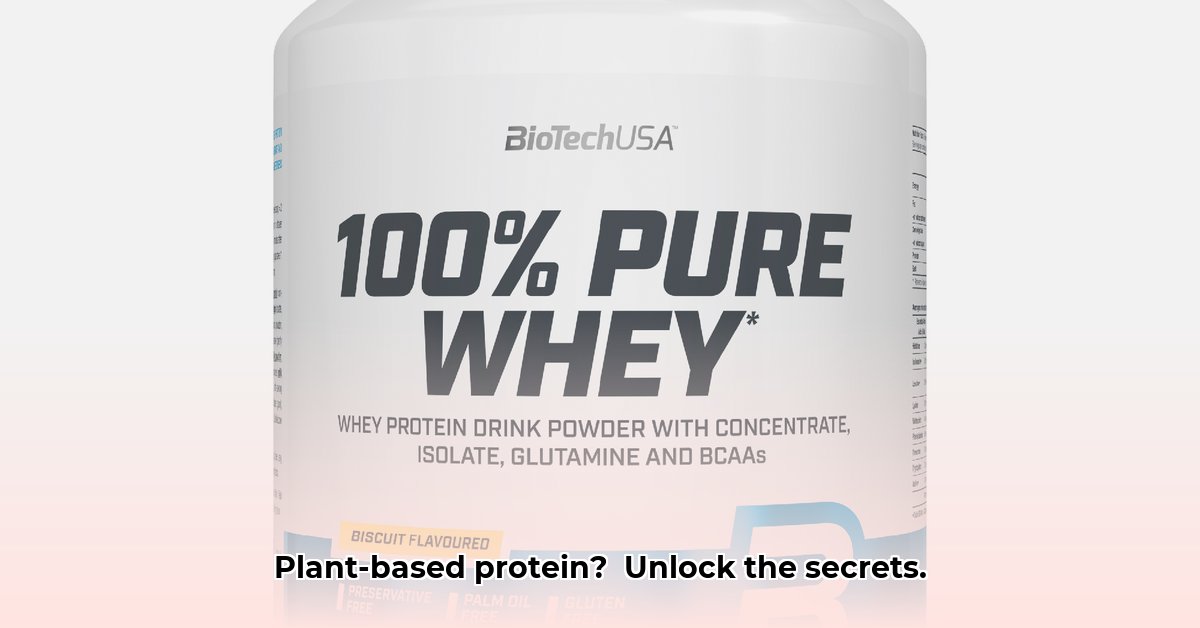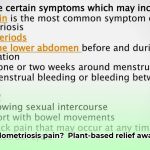Protein powder: whey or plant-based? It’s a common question, especially if you’re into fitness or following a specific diet. This guide cuts through the confusion, offering clarity on both types – their benefits, drawbacks, and a side-by-side comparison. Whether you’re aiming to build muscle, improve your health, or simply understand the differences, this guide will empower you to choose the protein powder that’s right for you. For more on plant-based diets, check out this helpful 30-day plan. Let’s explore the world of protein and find the perfect supplement to fuel your goals!
Decoding the Protein Powerhouse: Whey vs. Plant-Based
Choosing the right protein powder can feel overwhelming, given the marketing hype and variety of options. This guide simplifies the decision-making process by presenting the pros and cons of each type, enabling you to make an informed choice. It’s worth noting that around 20% of the population experiences digestive issues after consuming dairy, increasing the appeal of plant-based alternatives.
Whey Protein: A Closer Look
Whey protein, derived from milk during cheese production, is essentially the concentrated protein from the leftover liquid. It’s recognized as a “complete” protein, meaning it provides all nine essential amino acids that your body can’t produce on its own. This leads to rapid absorption, which is particularly beneficial for athletes aiming for quick post-workout recovery. Whey protein comes in several forms:
- Whey concentrate: The most common and typically the most affordable option. It contains some lactose (milk sugar), making it less suitable for those with lactose intolerance.
- Whey isolate: Undergoes further processing to remove most of the lactose, making it a better choice for individuals with lactose sensitivity. However, it’s generally more expensive.
- Whey hydrolysate: Pre-digested for even faster absorption, this form is often the most expensive.
Despite its benefits, whey protein production can have significant environmental implications, and its lactose content makes it unsuitable for some.
Plant-Based Proteins: A World of Options
Plant-based protein powders offer a variety of sources, including pea protein, soy protein, brown rice protein, and many more. They are generally considered more sustainable than whey protein. However, most plant-based proteins are not “complete” on their own, as they may lack one or more essential amino acids. To overcome this limitation, manufacturers often blend different plant proteins together. Combining pea and brown rice protein, for instance, can create a complete amino acid profile comparable to whey.
While generally easier to digest than whey, some plant proteins contain FODMAPs (fermentable oligosaccharides, disaccharides, monosaccharides, and polyols), which may cause bloating or digestive upset in sensitive individuals. Additionally, be aware of potential allergens like soy or gluten, which are present in some plant-based protein powders.
Whey vs. Plant-Based: A Detailed Comparison
Let’s examine the key differences between whey and plant-based protein powders:
| Feature | Whey Protein | Plant-Based Protein |
|---|---|---|
| Amino Acid Profile | Complete, high in BCAAs (branched-chain amino acids), ideal for muscle growth | Often incomplete on its own; usually requires blending to achieve a complete profile |
| Digestibility | Fast absorption; may cause digestive issues for those with lactose intolerance | Generally gentle, but some varieties can cause bloating in sensitive individuals due to FODMAPs |
| Environmental Impact | Higher due to dairy farming practices | Generally lower, as plant-based agriculture often requires fewer resources |
| Cost | Moderate to high, depending on the type (concentrate, isolate, hydrolysate) | Moderate; varies greatly depending on the brand, protein source, and whether the blend is designed for a complete profile |
| Muscle Growth | Highly effective due to complete amino acid profile and rapid absorption | Effective when a complete amino acid profile is achieved through blending different plant sources |
Understanding the Role of Amino Acids
While both whey and well-formulated plant-based protein powders can contribute to muscle growth, the type and quantity of amino acids play a crucial role. Branched-chain amino acids (BCAAs), particularly leucine, are vital for stimulating muscle protein synthesis. Whey protein generally has a higher concentration of BCAAs, but strategic plant-based combinations can provide comparable levels. It’s important to consider whether your focus is on maximizing muscle growth and how effectively BCAAs contribute to that goal.
Digestibility and Tolerance: Listen to Your Body
Individual responses to protein powders vary widely. Whey’s rapid absorption is beneficial for many, but it can lead to digestive discomfort if you’re lactose intolerant. Plant-based proteins, on the other hand, may cause bloating in individuals sensitive to FODMAPs, commonly found in legumes. Ultimately, your gut will determine which type of protein powder is best for you. According to the National Institute of Diabetes and Digestive and Kidney Diseases, digestive issues affect up to 70 million Americans, highlighting the importance of choosing a protein powder that aligns with your digestive system.
Environmental Considerations: Choosing Sustainably
If you’re mindful of the planet, plant-based protein production generally has a smaller environmental footprint than whey production, making it a more sustainable choice.
Cost and Availability: Balancing Budget and Access
The cost of protein powders varies significantly. Whey protein tends to be more expensive, while plant-based options range from budget-friendly to premium. Both are widely available. It’s important to consider which options align with your budget and accessibility.
Muscle Growth: A Holistic Perspective
Remember that muscle growth isn’t solely dependent on your protein powder. Your training regimen, overall diet, and genetics all play significant roles. Both whey and plant-based proteins can effectively support muscle growth when combined with a balanced diet and consistent exercise.
Developing Your Personalized Protein Plan
The “best” protein powder is the one that aligns with your individual needs, preferences, and health goals. Factor in your lactose tolerance, environmental concerns, and specific fitness objectives. Consider consulting a registered dietitian or healthcare professional for personalized guidance. They can help you create a protein plan that’s tailored to your unique requirements.
Selecting the Right Plant-Based Protein Powder for Muscle Growth
Key Takeaways:
- Whey protein offers a complete amino acid profile and rapid absorption, which can enhance muscle growth and recovery.
- Plant-based proteins offer a comparable muscle-building potential, accommodate various dietary needs, and are often more sustainable.
- The ideal protein powder depends on your dietary restrictions, health concerns, and fitness goals. Prioritize adequate protein and essential amino acid intake.
- Blending multiple plant protein sources creates a complete amino acid profile, optimizing muscle protein synthesis.
A Deeper Dive into Whey Protein
Whey, a byproduct of cheese production, is a popular supplement. It’s valued for its complete amino acid profile, containing all nine essential amino acids that the body cannot produce. This makes it highly effective for muscle growth. Whey protein is absorbed quickly, providing a rapid post-workout boost. However, lactose intolerance is a common issue. Different types of whey protein exist: concentrate, isolate (lower in lactose), and hydrolysate (pre-digested for easier absorption). Whey production can be resource-intensive, so environmental impact is something to consider.
A Comprehensive Look at Plant-Based Protein Alternatives
There are many plant-based options, each with unique properties. Pea protein is a frequent choice, and is often hypoallergenic. Soy protein stands out with its complete amino acid profile. Brown rice protein is easily digestible, though often less potent on a gram-per-gram basis. Other sources include hemp and chia. However, most plant-based proteins are not perfectly complete on their own, potentially lacking sufficient amounts of one or more essential amino acids. Blending plant proteins solves this; for example, combining pea and rice might create a complete, synergistic profile. Digestibility is key; some plant proteins, like pea protein, are high in FODMAPs, which can trigger bloating and discomfort in sensitive people. Allergens, like soy, are another consideration. Plant-based proteins are often more sustainable than whey.
Head-to-Head Comparison: Whey vs. Plant-Based
Here’s a direct comparison:
| Feature | Whey Protein | Plant-Based Protein |
|---|---|---|
| Amino Acid Profile | Complete | Often incomplete; combining sources is essential for a complete profile |
| Absorption Rate | Rapid | Slower |
| Digestibility | Can cause issues with lactose intolerance | May cause issues with FODMAP sensitivities or allergies |
| Environmental Impact | Higher | Generally lower |
| Cost | Moderate to high | Moderate to high; cost varies significantly by type and brand |
| Effectiveness | Effective for muscle growth | Effective, especially with complete protein blends |
If you prioritize rapid recovery, whey might be better. If environmental concerns are paramount, plant-based proteins might be preferable. If you are vegan or lactose-intolerant, plant-based is your only
- Plant-based Diet Colitis Remission: Success Stories - December 18, 2025
- Plant Based Diet Breast Cancer: Research-Based Benefits - December 16, 2025
- Plant-Based Diet Ulcerative Colitis Remission: Proven Benefits - December 15, 2025










